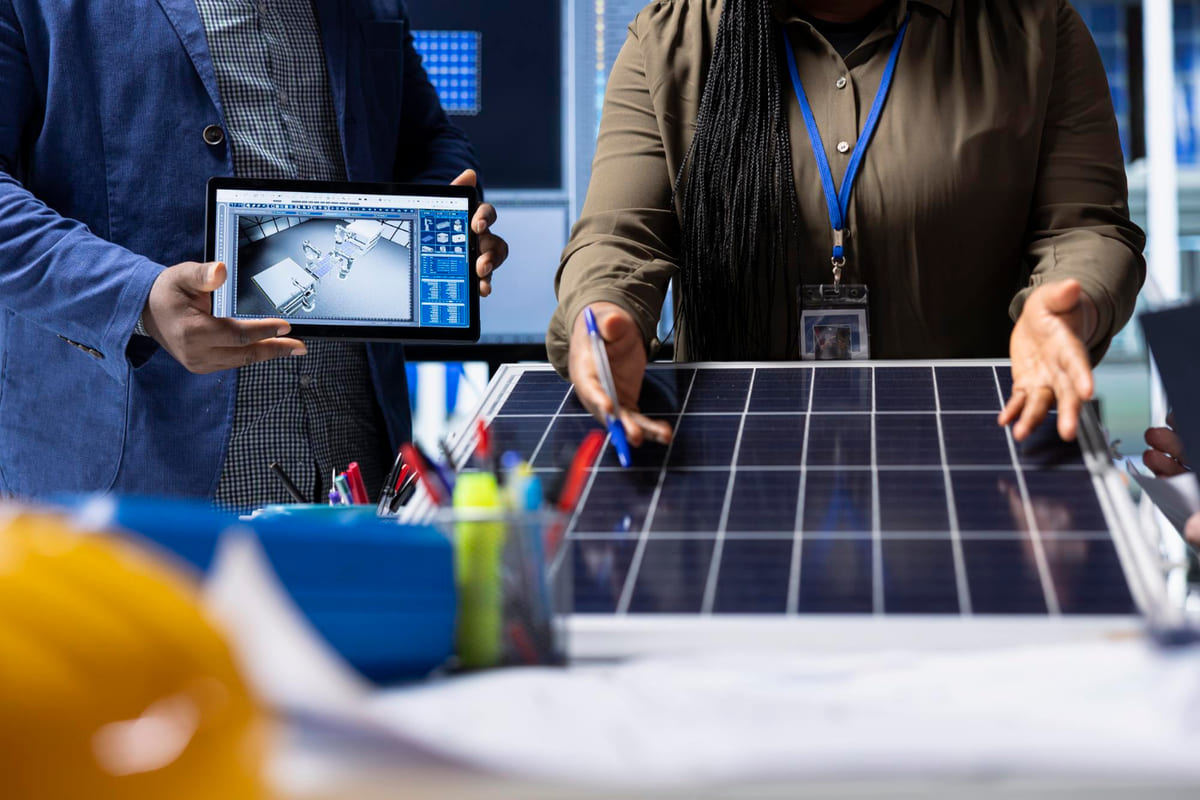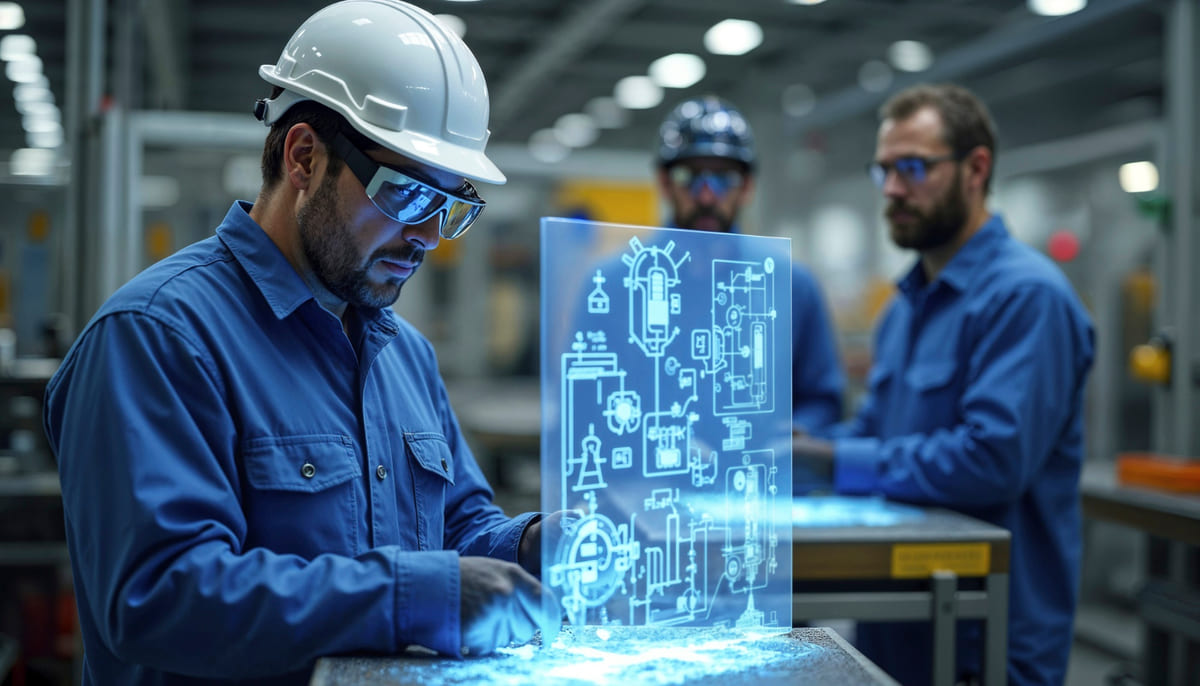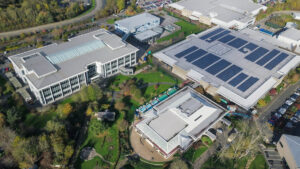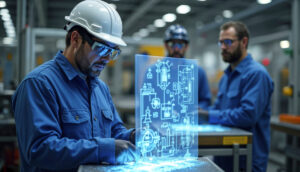Smart construction represents a profound shift in the methodologies employed for designing, constructing, and operating buildings. This paradigm integrates advanced digital technologies and industrialized manufacturing techniques to significantly enhance productivity, minimize whole-life costs, improve sustainability, and maximize user benefits. This approach leverages cutting-edge technology to achieve substantial increases in efficiency, overall performance, and occupant comfort within the built environment.
While the initial capital expenditure for implementing smart technologies may elevate upfront costs, the resultant long-term operational savings, particularly in energy consumption, frequently yield a rapid return on investment, often within a few years. The increasing cost of energy resources, coupled with growing global concerns regarding carbon emissions from the building sector, underscores the critical importance of adopting these intelligent construction practices.
The fundamental goals of smart construction, which include achieving greater efficiency, enhanced sustainability, and significant cost reductions, inherently necessitate and drive the widespread adoption of advanced sensor technologies. The growth trajectory of smart construction is thus intrinsically linked to the innovation and deployment capabilities of leading sensor companies. These organizations are not merely suppliers of components; they are foundational enablers, transforming traditional construction into a data-driven, optimized process.
Table of Contents
The Indispensable Role of Sensors in Modern Building
Sensors constitute the fundamental data collection layer in smart construction, providing the real-time information essential for intelligent systems to operate effectively. They continuously gather data on a diverse array of operational parameters, encompassing environmental conditions, the physical states of materials, and patterns of human activity. This continuous stream of data enables precise control and dynamic optimization of building systems, moving beyond static configurations to real-time adjustments based on prevailing conditions. For example, by monitoring variations in temperature and humidity, or tracking human traffic patterns, building automation systems can optimize lighting and air conditioning systems in real time, directing resources precisely where they are most needed.
Beyond operational efficiency, sensor technologies are critical for enhancing safety, increasing productivity, and ensuring compliance throughout the entire construction and subsequent building lifecycle. Their capacity to detect and quantify conditions imperceptible to human senses, such as subtle structural shifts or hazardous chemical concentrations, provides a vital layer of oversight and preventative capability. This proactive monitoring helps to mitigate risks and improve overall project outcomes.
The Diverse Landscape of Sensors in Smart Construction
1. Core Sensor Categories and Their Applications
Environmental and Site Condition Monitoring
Wifi-connected sensors are strategically deployed to provide critical, real-time information concerning site conditions, thereby enhancing both safety and productivity. This encompasses comprehensive monitoring of humidity and other weather-related factors that directly influence the integrity of building materials, the efficacy of construction methods, and the safety of workers. Beyond meteorological parameters, these sensor companies facilitate advanced gas leak detection and the identification of other chemical issues that are not discernible through human senses. Environmental sensors also meticulously monitor noise, vibration, and the quality of air, soil, and water. This capability is vital for controlling pollution generated by construction activities, mitigating their impact on local communities, and assisting in biodiversity protection measures.
Structural Health and Material Integrity
Strain and displacement sensors form the foundational components of structural health monitoring (SHM) within the construction industry. They are instrumental in assessing stress and strain within critical materials such as concrete and steel. Advanced devices, including Linear Variable Differential Transformers (LVDTs) and accelerometers, precisely detect linear displacements, vibrations, or accelerations, enabling the early prediction of potential structural weaknesses before they escalate into critical issues.
A growing application involves the continuous monitoring of material health, such as concrete curing and long-term integrity, even after the construction phase. This provides ongoing data for predictive maintenance and ensures the safety and longevity of the built structure. Vibrating wire and fiber optic sensors are particularly valued for their stability and durability, making them ideal for long-term monitoring in harsh construction environments.
Worker Safety and Asset Management
Sensor-enabled wearables represent a significant advancement in worker safety. These include smart helmets, vests, gloves, and boots embedded with sensors that provide real-time data on a worker’s physical state, performance levels, tool management, and operating conditions. Biometric sensors specifically track physiological indicators like heart rate, posture, body temperature, and repetitive motions, which can help prevent injuries and alert management to critical incidents such as slips, falls, or heat exhaustion.
Proximity sensors are deployed around heavy equipment to establish dynamic detection zones. These systems alert both equipment operators and nearby pedestrians to potential collision risks, thereby significantly enhancing safety in congested or active worksites. For comprehensive asset management, sensor companies offer solutions that enable real-time tracking of materials throughout the supply chain. This ensures timely delivery, reduces material loss, and improves communication with clients. Radio Frequency Identification (RFID) tags are a key technology in this area, streamlining inventory processes and virtually eliminating human error by allowing quick, accurate, and non-line-of-sight reading of multiple tags simultaneously.
Suggested article to read: Supply Chain Management in Construction; Comprehensive Guide 2024

Building Energy Management and Occupancy
Internet of Things (IoT) sensors are continuously deployed throughout buildings to collect data on a wide range of parameters, including temperature, humidity, light levels, motion, and air quality. This granular data is then utilized to dynamically optimize heating, ventilation, and air conditioning (HVAC) systems, lighting, and security based on real-time occupancy and environmental conditions. The integration of these sensor data streams into Building Information Modeling (BIM) models provides a holistic view of a structure’s performance. This enables greater control over factors such as temperature patterns, energy usage, and foot traffic, which is vital for maintaining long-term operational costs and achieving stringent energy efficiency goals.
The detailed breakdown of sensor categories reveals a wide array of applications, from environmental monitoring and structural health to worker safety and building energy management. While each category addresses specific needs, the overarching benefits—such as enhanced energy savings, improved safety, and increased productivity—are often realized through the synergistic integration of data from these disparate sensor types into centralized management systems, such as BIM or building automation systems. For example, optimizing HVAC systems for energy efficiency and occupant comfort requires combining data from temperature, humidity, and occupancy sensors.
This highlights that the true value proposition of leading sensor companies in smart construction extends beyond merely manufacturing individual sensor devices. It encompasses their capability to develop and provide integrated platforms, data analytics, and software solutions that can aggregate, interpret, and act upon diverse sensor data streams, enabling comprehensive and holistic management of both construction projects and the operational lifecycle of buildings. This signifies a market evolution towards integrated solutions rather than standalone hardware.
Table 1: Key Sensor Types and Their Applications in Smart Construction
| Sensor Type | Primary Function | Key Applications in Construction |
|---|---|---|
| Environmental Sensors | Monitor ambient conditions and pollutants | Site condition monitoring (humidity, temperature, wind), gas leak detection, air/soil/water quality monitoring, noise/vibration control |
| Strain & Displacement Sensors | Measure deformation, stress, and structural movement | Structural health monitoring (bridges, buildings, tunnels), concrete curing, long-term material integrity assessment |
| Wearable Sensors | Track worker physiological state, location, and tool interaction | Worker safety (heart rate, posture, fatigue, falls), tool management, real-time performance monitoring |
| Proximity Sensors | Detect objects or people within a defined range | Collision avoidance (heavy equipment), pedestrian safety, hazard zone alerts |
| RFID Tags | Enable automatic identification and tracking of assets | Material tracking (supply chain), equipment management, inventory control, theft prevention |
| Occupancy Sensors | Detect presence or absence of people in a space | Optimizing lighting and HVAC, space utilization analysis, security system activation |
| Energy Monitoring Sensors | Measure electricity consumption and energy flow | Real-time energy usage tracking, identifying inefficiencies, optimizing power distribution |
| Vision Sensors | Capture and analyze images for inspection and guidance | Site progress tracking, quality control, defect detection, robotic guidance |
2. Advanced Sensor Technologies Shaping the Future
Building-Integrated Photovoltaics (BIPV): Energy-Generating Surfaces
Building-Integrated Photovoltaics (BIPV) represents a transformative approach where photovoltaic materials are seamlessly integrated into the building envelope, directly replacing conventional construction materials such as roofs, skylights, or facades. This dual functionality allows buildings to serve as both structural elements and active electricity generators. A key advantage of BIPV is that its initial cost can be offset by reducing expenditures on traditional building materials and eliminating the need for separate mounting hardware.
The BIPV market is experiencing robust growth, with projections indicating an increase from $20.5 billion in 2024 to $25.46 billion in 2025, demonstrating a compound annual growth rate (CAGR) of 24.2%. This expansion is primarily driven by the escalating global demand for zero-energy buildings and the rising costs of conventional electricity.
Innovations in Photovoltaic Materials: Perovskites, Thin-Films, and Quantum Dots
The BIPV market’s growth is significantly supported by rapid advancements in photovoltaic materials.
-
Thin-Film Solar Cells: These advanced solar cells offer distinct advantages over traditional crystalline silicon due to their inherent lighter weight, flexibility, and potential for semi-transparency, making them highly suitable for BIPV applications such as photovoltaic glazing. Common materials include Cadmium Telluride (CdTe) and Copper Indium Gallium Selenide (CIGS), which have demonstrated impressive laboratory efficiencies of 22.10% and 23.35%, respectively. Their manufacturing process allows for conformity to curved surfaces and production in rolls, potentially leading to more cost-effective, high-throughput methods like roll-to-roll processing.
-
Perovskite Solar Cells: Positioned as a “game-changer” by many sensor companies, perovskite solar cells are characterized by their lightweight, flexible nature, high efficiency (exceeding 29% in laboratory settings with a potential for 30% in commercial applications), and lower production costs compared to silicon-based panels. Notably, perovskite-silicon tandem cells have achieved record efficiencies of 33.9%, pushing beyond the theoretical limits of single-junction cells. Their semi-transparent variants are particularly ideal for seamless integration into windows and facades, enabling buildings to generate electricity while preserving natural light and aesthetic appeal.
-
Quantum Dot Photovoltaics (QDPV): Quantum Dot Solar Cells (QDSCs) offer unique properties including flexibility, lightweight design, and semi-transparency, making them highly suitable for integration into building components such as windows, walls, and facades. A significant advantage of QDSCs is their effectiveness even in low-light conditions and their tunable bandgap, which enhances light absorption across a broader spectrum. While commercial availability is still somewhat limited due to production challenges and costs, ongoing public and private investments are accelerating their market entry.
-
Organic Photovoltaics (OPV): OPV panels are distinguished by their lightweight, flexible design, cost-effective manufacturing processes (often utilizing roll-to-roll printing), and reduced environmental footprint due to their reliance on non-toxic organic compounds. These panels offer extensive customization options in terms of color, transparency, and design, allowing for aesthetic integration into architectural designs without compromising visual appeal. Furthermore, OPV panels maintain efficient energy conversion even in low-light conditions, making them suitable for indoor applications and shaded environments.
The long-term success and widespread adoption of BIPV are not solely contingent on its internal technological advancements. Instead, they are increasingly reliant on its seamless integration into sophisticated smart building ecosystems. This is because the BIPV market’s significant growth, driven by mandates for net-zero energy buildings and the economic benefits of on-site power generation, is supported by rapid advancements in BIPV materials like perovskites, thin-films, and quantum dots, which offer enhanced efficiency, flexibility, and aesthetic integration. Simultaneously, broader smart building trends emphasize the integration of AI, IoT, and digital twin technologies for real-time optimization, predictive maintenance, and comprehensive monitoring.
The inherent challenges of BIPV, such as translating laboratory efficiencies to commercial applications, managing operational temperatures, and ensuring long-term durability, can be effectively addressed by these advanced smart building systems. For instance, real-time data from integrated systems, including potentially BIPV, can drive significant operational efficiencies and mitigate operational challenges, much like how insights from 15-minute interval data empowered a facilities team to reduce natural gas usage by 50 percent by reconfiguring a building’s automation system. This creates a powerful feedback loop where BIPV becomes a core data source for intelligent building operations, transforming buildings from passive energy consumers into active, intelligent energy producers.
Leading Sensor Companies Driving Smart Construction in 2025
This section profiles prominent sensor companies, detailing their core offerings and specific contributions to smart construction.
1. Siemens: Integrated Building Automation and Digital Infrastructure
Siemens is a prominent leader among sensor companies in building automation and smart infrastructure. They provide comprehensive sensor and control systems designed to make buildings more energy-efficient and sustainable. Their approach focuses on creating optimal environments for work, life, learning, and healing by leveraging intelligent infrastructure.
Key Sensor Solutions and Their Impact
Siemens deploys extensive networks of connected sensors to measure critical building conditions such as temperature, humidity, carbon dioxide (CO2) levels, light intensity, and occupancy. These devices feed data into Siemens’ Desigo building management software, which then optimizes heating, ventilation, and air conditioning (HVAC) and lighting usage to prevent waste while maintaining occupant comfort.
Their portfolio includes advanced HVAC sensors, smart meters, and power sensors that track electricity usage in real-time. A notable example is an energy retrofit project involving 18 municipal buildings in Massachusetts, where Siemens’ environmental sensors and automation controls led to approximately $100,000 in energy cost savings in the first year. Siemens’ smart infrastructure solutions typically reduce HVAC and lighting energy consumption by 20% or more in green office buildings globally through sensor-optimized scheduling and real-time control.
2. Schneider Electric: EcoStruxure for Hyper-Efficient Buildings
Schneider Electric stands out among sensor companies as a global leader in energy management and automation, actively promoting sustainable construction through its IoT sensor networks. Their EcoStruxure Building-IoT Sensor Solution aims to deliver hyper-efficient, resilient, and sustainable building operations.
Key Sensor Solutions and Their Impact
Their EcoStruxure platform is central to improving building efficiency, utilizing wireless sensors to monitor room temperature, humidity, occupancy, and indoor air quality (IAQ) parameters like CO2, TVOC, and particulate matter (PM1/2.5/4/10). These wireless sensors are designed for easy installation and low maintenance, reducing the need for wired connections. The SpaceLogic Multi-Sensors are a key offering, capable of detecting multiple data points—occupancy, motion, light level, noise, temperature, and humidity—within a single unit.
This multi-parameter data allows for fine-tuned, room-by-room control, such as dimming lights or moderating ventilation in unoccupied spaces, leading to significantly less wasted energy. Schneider Electric’s own IntenCity office building in France serves as a practical example, operating at net-zero energy and using only 10-15% of the energy of a conventional office building of its size, largely due to thousands of integrated IoT sensors tied into EcoStruxure.
3. Honeywell: Comprehensive Sensing for Building Performance
Honeywell is a well-established player among sensor companies, recognized for its leadership in building technologies and its pioneering work in environmental monitoring and safety sensors for smart construction. Their solutions aim to transform buildings with integrated systems that drive outcomes in healthcare, data centers, hotels, and more.
Key Sensor Solutions and Their Impact
Their solutions range from smart thermostats and occupancy detectors to advanced gas and air quality sensors. Honeywell offers a diverse portfolio including Indoor Air Quality sensors (Particulate Matter, TVOC, CO2), various Temperature sensors (averaging, outdoor, immersion, duct mount, wall mount), highly accurate Humidity sensors, and Differential Pressure sensors for zones and filter conditions. Honeywell also provides Dew Point sensors to prevent condensation, Economizer sensors for energy savings and improved IAQ, and Current sensors for proactive fault detection in equipment.
Their integrated smart building systems are implemented across commercial buildings, healthcare, data centers, and hotels to drive outcomes such as improved operational efficiency, financial performance, and user experience. The Honeywell Forge platform further enhances these capabilities through integrated sustainability solutions and IIoT-driven predictive maintenance.
4. Johnson Controls: OpenBlue for Intelligent and Autonomous Buildings
Johnson Controls is a leading name among sensor companies known for its building automation and controls, particularly through its OpenBlue digital platform. OpenBlue is an award-winning, AI-optimized smart building ecosystem designed to unlock building performance with near real-time data visibility.
Key Sensor Solutions and Their Impact
The OpenBlue platform leverages an extensive suite of IoT sensors to monitor temperature, humidity, occupancy, energy usage, and equipment status throughout a facility. The OpenBlue software analyzes this data to optimize operations, such as adjusting HVAC output based on actual occupancy or powering down systems after hours. Recent advancements include enhanced AI capabilities, with integrated generative AI tools that proactively recommend impactful energy savings projects.
This AI-optimized approach helps customers reduce operating costs and transition towards more autonomous buildings. A commissioned study by Forrester Consulting highlighted the significant impact of Johnson Controls’ OpenBlue, finding that a model organization could achieve up to a 155% return on investment (ROI) over three years, including up to 10% energy savings and a 67% reduction in chiller maintenance. This demonstrates the platform’s ability to deliver both environmental and financial returns.
5. Trimble: Precision Technologies for Site and Structural Monitoring
Trimble is a key player among sensor companies, recognized for its expertise in positioning and surveying equipment, which extends to critical sensor solutions for sustainable construction and infrastructure. Their technology aims to improve overall equipment effectiveness and reduce time searching for project progress.
Key Sensor Solutions and Their Impact
Trimble’s instruments are used to track the stability of structures and earthworks over time, providing essential data for structural health monitoring. Their portfolio includes rugged wireless weighing sensors for accurate load monitoring in crane and lifting applications, enhancing jobsite safety by providing real-time load information and triggering alarms as operators reach rated capacity. They also offer angle, length, and slew sensors for cranes. For asset management, Trimble utilizes smart sensors, such as RFID tags, to track construction equipment (e.g., graders, dozers, skid steers) across multiple job sites, enabling better coordination and scheduling.
This also facilitates predictive maintenance by alerting teams to upcoming equipment servicing needs, reducing costly breakdowns. Trimble’s sensor solutions have been deployed on major infrastructure projects globally. For instance, on a long-span bridge, Trimble sensors detected minor stress changes in support cables, triggering timely repairs and effectively extending the bridge’s service life.

6. Zebra Technologies: Real-time Asset Tracking and Supply Chain Visibility
Zebra Technologies is a prominent provider among sensor companies specializing in real-time tracking and identification solutions, increasingly vital for sustainable practices on construction sites. Their solutions aim to boost efficiency and prevent downtime by providing real-time visibility and control over equipment, tools, and materials.
Key Sensor Solutions and Their Impact
Their core offerings include RFID tags, barcode labels, and tracking software that enable automated monitoring of construction materials and assets. This technology provides real-time visibility into inventory levels, streamlines processes like sorting and shipping, and reduces manual effort, thereby boosting efficiency and preventing downtime. RFID systems eliminate the need for line-of-sight scanning, allowing for quick and accurate capture of multiple tags simultaneously, which is crucial for managing complex construction supply chains and large job sites.
While primarily highlighted for manufacturing, the principles of Zebra’s asset tracking solutions are directly applicable to construction. They ensure critical tools, equipment, and materials are available when needed, prevent theft or misplacement, and automate asset management processes, leading to more efficient workflows and project timelines.
7. Converge: Revolutionizing Concrete Monitoring
Converge is an innovative leader among sensor companies, dedicated to digitizing construction to build more efficiently, safely, and sustainably. Their primary focus is on concrete monitoring, aiming to accelerate project timelines and reduce embodied carbon.
Key Sensor Solutions and Their Impact
Converge offers advanced concrete sensors, including the wireless, fully embeddable Signal System and the reusable, surface-mounted Helix System, which provide real-time strength and temperature data from concrete pours. The Signal System is embedded directly into the pour, while the Helix System is surface-mounted, offering flexibility for large job sites. These sensors connect to the ConcreteDNA platform, which offers data management and AI-powered mix insights.
This technology enables faster, safer decisions on formwork striking and post-tensioning, potentially accelerating turnaround times by up to 40% by eliminating delays from traditional lab testing. By providing continuous, accurate data, Converge’s solutions reduce reliance on traditional, time-consuming lab testing, minimize safety risks associated with premature formwork removal, and offer a robust audit trail for quality assurance. Their systems support the use of low-carbon concrete mixes by providing real-time curing data, which is crucial for sustainable construction practices.
8. Giatec Scientific: Smart Concrete Intelligence for Quality Control
Giatec Scientific is a significant sensor company in smart construction, specializing in smart concrete solutions that enhance project quality and efficiency. Their goal is to build concrete structures faster, safer, and more economically.
Key Sensor Solutions and Their Impact
Their flagship product, SmartRock, is a wireless, wire-free concrete sensor that is directly embedded into the rebar to monitor real-time temperature and strength. This eliminates the need for manual data collection and reduces reliance on error-prone field-cured cylinder break tests. SmartRock sensors provide instant notifications via the SmartRock app and Giatec 360, enabling proactive decision-making anytime, anywhere. The system supports concrete temperature monitoring in both hot and cold weather conditions, ensuring proper curing and strength development.
Giatec 360, a cloud-based dashboard, provides advanced data analytics for evaluating concrete mixes and monitoring projects, while Roxi AI, an integrated machine learning algorithm, offers smart suggestions and detects anomalies in concrete performance. SmartRock can be seamlessly integrated with project management software via REST API, making it the only concrete IoT sensor integrated with Procore’s dashboard.

9. VergeSense: Occupancy Intelligence for Optimized Workspaces
VergeSense is a leading global provider among sensor companies specializing in occupancy intelligence, transforming how organizations measure and optimize their workspaces. Their focus is on delivering real-time spatial insights to guide workplace decisions.
Key Sensor Solutions and Their Impact
VergeSense’s Infinity sensor is a notable innovation, offering an unprecedented ten-year battery life and a significantly lower carbon footprint (up to 25 times lower than competing solutions). This wireless sensor covers up to 1,000 square feet in open environments with 95% accuracy in detecting people. It leverages advanced on-device AI for enhanced passive occupancy detection, recognizing subtle signs of space use like laptops or backpacks, even when individuals are not physically present.
The sensor also provides real-time object detection, automatically updating space inventories, and change detection for live floor mapping, ensuring layouts align with designed configurations. These capabilities contribute to creating a “digital twin” of office spaces, reflecting their real-time state. The data from Infinity sensors is seamlessly ingested into the Occupancy Intelligence Platform, which unifies and analyzes all occupancy data to support real estate and workplace decisions, optimize spaces, reduce costs, and improve employee experience. The platform also features a Generative AI-powered Workplace Assistant that provides personalized recommendations for optimization.
10. Campbell Scientific: Robust Systems for Geotechnical and Environmental Monitoring
Campbell Scientific is a well-established U.S. company among sensor companies, renowned for its robust data acquisition systems and environmental monitoring instruments, with over 40 years of experience. They are a staple provider for structural health monitoring in construction and civil engineering, known for their reliability in harsh environments.
Key Sensor Solutions and Their Impact
Campbell Scientific’s equipment often serves as the “brain” powering sensor networks on bridges, buildings, and other structures. Their offerings include rugged data loggers (CR-series, GRANITE series) designed for long-term, unattended monitoring, supporting a wide range of sensor types. They provide solutions for geotechnical monitoring, including water level, water quality, slope stability analysis, weather monitoring, ambient air quality, and dam and tailing monitoring. Their systems support various sensors such as vibrating wire strain gauges, tiltmeters, piezometers, accelerometers, and crackmeters.
Campbell Scientific’s wireless sensor network integration offers interfaces (spread-spectrum radios, Wi-Fi, cellular modems) to connect remote sensors to a central unit without extensive cabling. Their VSPECT technology provides exceptionally accurate readings of vibrating wire sensors with built-in diagnostics to detect issues like loss of tension, ensuring high data quality for critical parameters. Notable projects include monitoring the Confederation Bridge in Canada for structural behavior and instrumenting a Chicago skyscraper to measure sway and structural strain under wind loads.
FAQs
How do sensor companies contribute to sustainable construction?
Sensor companies contribute to sustainable construction by enabling real-time monitoring of energy consumption, optimizing resource allocation, and facilitating the adoption of energy-generating building materials like BIPV. This leads to reduced carbon emissions, lower operational costs, and the creation of more environmentally friendly structures.
What are the primary types of sensors used in smart construction projects?
The primary types of sensors used in smart construction projects include environmental sensors for site conditions, strain and displacement sensors for structural health, wearable sensors for worker safety, proximity sensors for collision avoidance, RFID tags for asset tracking, and occupancy and energy monitoring sensors for building management.
Which emerging sensor technologies are expected to have the biggest impact on construction by 2025?
Emerging sensor technologies expected to have a significant impact on construction by 2025 include advanced Building-Integrated Photovoltaics (BIPV) utilizing perovskite, thin-film, and quantum dot solar cells, alongside sophisticated IoT-enabled sensors for comprehensive building automation and real-time data analytics.
Is it true that smart sensors can reduce construction project costs?
Yes, it is true that smart sensors can reduce construction project costs. They achieve this by enabling predictive maintenance for equipment, optimizing energy usage in buildings, improving supply chain efficiency by tracking materials, and reducing safety incidents, all of which minimize delays, waste, and unexpected expenses.
Conclusion
The landscape of smart construction is rapidly evolving, driven by the imperative for greater efficiency, enhanced safety, and improved sustainability within the built environment. At the core of this transformation are advanced sensor technologies, which serve as the indispensable conduits for real-time data collection and intelligent decision-making. The integration of diverse sensor types—from environmental and structural health monitors to worker safety wearables and building energy management systems—underscores a shift towards holistic, data-driven approaches in construction and facility operation.
Innovations in materials like Building-Integrated Photovoltaics, including perovskite, thin-film, and quantum dot solar cells, are further enabling buildings to become active energy producers. Leading sensor companies are at the forefront of this revolution, providing the sophisticated hardware and integrated software platforms necessary to realize the full potential of smart construction, paving the way for more resilient, efficient, and environmentally responsible infrastructure in 2025 and beyond.
Resources:
Campbell Scientific. (n.d.). Geotechnical Monitoring.
Cervicorn Consulting. (n.d.). Quantum Dot Solar Cells Market Important Factors.
CMIC Global. (n.d.). 2025 Construction Trends.
Danterr. (n.d.). Converge Signal® – Embedded Wireless Concrete Sensor System.
Digitalcarbon.io. (n.d.). The Future of Construction: Top 5 Tech Trends for 2025.
Energy Evolution Conference. (2024, August 27). Perovskite Solar Cells.
Florida Institute of Technology. (n.d.). Smart Building Construction.
Fraunhofer ISE. (n.d.). Solar Power Plants and Integrated Photovoltaics.
PlanRadar. (n.d.). What are the advantages of using IoT sensors in building management?.
Residential Solar Panels. (2025, March 18). Revolutionary Solar Panel Breakthroughs That Are Changing Home Energy.
SenTec. (n.d.). Building and construction industrial sensor.
Sunphotonics. (2024, November). BIPV Panels – Uses, Benefits, Challenges and Future 2025.
ZoneSafe. (n.d.). Proximity Sensors for Heavy Equipment: Enhancing Safety and Efficiency.
For all the pictures: Freepik
Suggested article for reading:
4 Streamlining Construction Supply Chains with AI-Powered Platforms
6 Benefits of Integrating IoT with Asset Tracking Systems
5 Leading Sensor Companies in Structural Health Monitoring for Construction
6 Sensor Technology Leaders Driving Sustainable Construction in 2025
3 Case Studies Showcasing Successful Asset Tracking Implementations in Construction
5 Ways AI Enhancing Safety and Efficiency in Construction Projects




